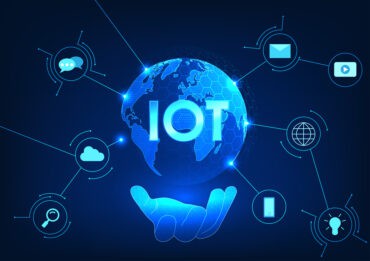
Many firms see the value IoT edge computing offers to improve their business, but they need to know how to debut an IoT edge project quickly and cheaply.
Gartner defines edge computing as “solutions that facilitate data processing at or near the source of data generation.” Gartner also predicts that while currently only 10 percent of enterprise-generated data is processed at the edge, by 2022 that figure will reach 50 percent.
Many companies already want to take advantage of the value IoT edge computing offers to improve their business decisions, but they do not know how to implement an IoT edge project quickly and in a cost-effective manner. How can they move from a centralized data center approach to an IoT edge solution? How much data does the organization need to collect and from how many edge devices? Will the amount of data grow and change over time?
The problem is most companies lack the in-house expertise to answer these questions. As organizations look at IoT edge solutions there are several considerations that are often overlooked, and scalability is the most common.
See also: Is the key to edge computing wireless power?
An IoT solution must be able to handle a large number of various connected devices with processing at the edge, and scale as the business requires with increased reliability. An IoT edge project implemented with 100 edge devices becomes much different when it grows to 500 devices. Businesses need extensive control to ensure the project’s success at scale. The solution should be future-proof, allowing for change without requiring a whole new system.
There are several considerations for creating a scalable IoT edge project:
- Gateway device management
- Industrial driver and connectivity management
- Edge processing and filtering of data at scale
- A centralized dashboard for a complete view and management of data and devices
- Running analytics applications at scale at the Edge and Cloud
- Achieving cloud connectivity at scale
- Security management
One specific challenge when scaling an IoT edge computing project is having a centralized system for managing devices, security, and data collection for the many different types of legacy industrial devices in the field. Successful, scalable IoT implementations use a complete management UI that encompasses the ability to seamless connect to a wide number of PLCs, CNCs, and robotic systems via edge gateways, with the ability to manage devices and deploy applications and analytics at the edge.
Once data is collected, the next challenge is around how to analyze this data with various applications at the edge. Organizations need a way to install, update, and manage applications for a large number of edge devices at once. It may seem outdated now, but there are still plenty of projects installing updates one by one on each device in a large system.
Having the ability to run machine learning tools, complex analytics, and detect problems at the edge is extremely beneficial for efficiency – ultimately saving cloud and bandwidth costs for an IoT implementation. It is nearly impossible, or at least extremely time-consuming, to do this kind of analysis without having a mechanism to control and manage the process for a large number of gateways at once.
IoT Platforms Fill the Gap in Edge Computing
According to MachNation forecast data, IoT platform revenue will grow 89% in 2018 to reach USD 3.3 Billion. Companies are realizing the value of adopting a flexible platform that enables their IoT project to scale and incorporate new types of data over time.
Platforms are largely accepted as the solution to these IIoT challenges for their simplicity, built-in security and interoperability with varied legacy devices. IIoT platforms and middleware fill the gap between old and modern equipment – lying between physical devices and the end-user software application such as predictive analytics.
Once Industrial firms decide exactly what data they want to capture and how they will use it on the back-end, they should look for a platform that matches up with their needs. For instance, they should choose a middleware that can be installed on their gateway or industrial PC of choice, which includes local applications for data storage, complex event processing, analytics, data filtering, cloud connectivity and overall management of the solution and deployment.
The ideal IIoT platform can “speak the many languages” of both industrial and IoT protocols. An existing library of downloadable applications enabling gateway-based-processing without any extra coding can save a lot of time and money. Another key aspect of a successful implementation is the ability to manage edge devices remotely from the cloud, and store data in a central location for analytics and visualization.
Industrial IoT middleware simplifies the process, using one software to manage a marketplace of applications and industrial drivers to enable gateways to interact with machines and legacy equipment. With a secure edge-level solution to connect to nearly all industrial devices and systems, manufacturers can liberate, process and integrate the data from the factory floor into the cloud or on-premises enterprise systems in a modern and flexible way.







